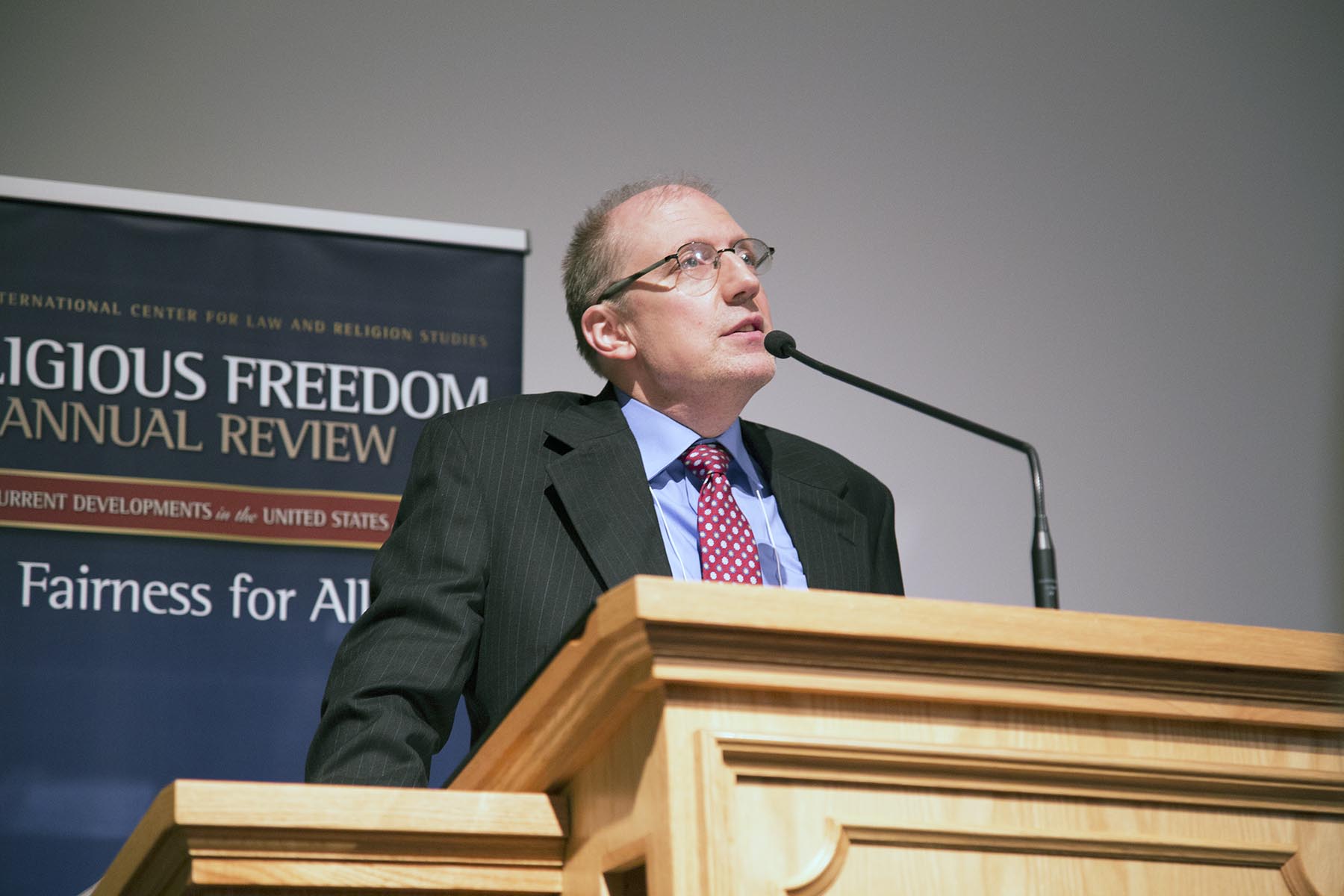Religious Freedom Annual Review 2016 Friday Afternoon Workshops: How Broad is Religious Freedom? Constitutional and Legislative Protection

by Kaleb Brimhall
Thomas C. Berg, a James L. Oberstar Professor of Law and Public Policy at the University of St. Thomas School of Law, discussed the various areas where religious freedom issues commonly surface and explored the current state of the law in those respective areas in his Friday, 8 July 2016 Workshop titled “How Broad is Religious Freedom? Constitutional and Legislative Protections”.
In regards to Freedom of Speech and Freedom of Association, Professor Berg indicated that religious people hold fairly equal rights to those of other groups and that protections are fairly broad. Professor Berg referenced rulings by the Supreme Court granting the Boy Scouts the right to protect their message/image when selecting leadership and in regards to the Westboro Baptist Church’s right to protest even at very sensitive events.
In regards to protections specifically crafted for religious organizations, Professor Berg discussed the Free Exercise Clause of the United States Constitution, free exercise clauses in state constitutions, as well as federal and state Religious Freedom Restoration Acts (RFRAs). There are currently eleven state constitutions with free exercise clauses that are generally more broadly interpreted in favor of religion than the United States Constitution and twenty-one states have RFRA laws.
Professor Berg then reviewed the history of “Free Exercise Clause” jurisprudence, including the Employment Division v. Smith decision that triggered federal and state RFRA legislation designed to re-stablish the “compelling interest” test following the Smith decision. Professor Berg explored the application of the key terminology to the test set forth in Smith and the “compelling interest” test including “neutrally and generally applicable,” “substantial burden”, and “least restrictive method.” He reviewed applicable case law and reviewed potential scenarios with attendees to help explore the potential limits of the case law rulings.
Professor Berg gave attendees an overall view of religious freedom protections as currently defined and a look into some of the areas currently under flux based on pending cases. The application of the case law to various fact patterns not specifically covered in the decisions gave attendees an opportunity to further consider just how broad religious freedom is and where possible areas of concern exist.